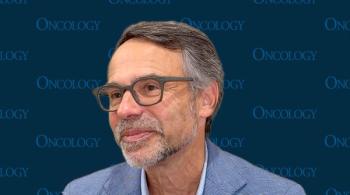
Bridging Radiation and CAR T-cell Therapy May Have Benefit in Relapsed/Refractory DLBCL
The addition of radiotherapy to CAR T-cell therapy may particularly benefit patients with localized disease, according to Timothy Robinson, MD, PhD.
Timothy Robinson, MD, PhD, spoke with CancerNetwork® during the
Robinson, an assistant professor of therapeutic radiology at Yale Cancer Center, described how the addition of bridging radiotherapy may especially benefit patients with a single site of disease, detailing the factors of the tumor microenvironment that may limit the efficacy of CAR T-cell therapy when administered by itself. He spoke about his prior experience at Moffitt Cancer Center to illustrate how a protracted course of radiation before giving CAR T-cell therapy may improve outcomes for patients. Additionally, he acknowledged that the addition of radiation may not be suitable when a patient has several sites of disease.
Transcript:
There are absolutely patients [who] we think they would benefit from radiation in addition to CAR T. The nice thing about CAR T is that it goes all over the body. The place where it struggles is when you have a large tumor, for many reasons. One [reason is] the sheer tumor burden. T cells can only amplify so much before they just get worn out, give up, and get outnumbered [due to the] total burden.
[Additionally], we know that these very large tumors—this is an area of research; we haven’t shown this, but it’s possible—there could be things that are very inhospitable in that microenvironment. There could be areas of hypoxia and acidosis that these T cells just cannot deal with. We also know that, sometimes, [when] we have a large tumor, just the pressure of a solid tumor results in interstitial pressure, where it’s like a balloon or a tire that’s been blown up to full, and it’s just stiff and hard to physically get things into it, like T cells.
[Therefore,] there are a lot of reasons why a big, angry, single tumor is the most difficult thing for CAR T to address, whereas [with] radiation, that’s where we shine. For patients, in terms of bridging, if you have 1 site of disease that is large, bulky, high-risk, and hypoxic, that’s where radiation can have the most value for bridging. In my Moffitt Cancer Center days working with those folks, we had a paradigm shift, even in the early days, where [the idea was to] get in the CAR T as quickly as possible. But we shifted practice so that if you had somebody with a single site of disease, we would delay CAR T so that we could do a more protracted course of radiation to "cure" what we could see, and then have the CAR T come in afterward.
Localized disease up-front is definitely a place where radiation benefits. On the flip side, [it’s the] same thing. If you [have received prior] CAR T and have one site of the disease that’s not responding, that’s a great place for radiation. Where it’s not a great place for radiation is if you have 50 sites of disease, and they’re all small throughout [the body]. That is a very diffuse process that we’re not going to be able to help with in a focal way.
Reference
Robinson T. Radiotherapy’s effective incorporation with chimeric antigen receptor (CAR)-T cell therapy for relapsed/refractory diffuse large B-cell lymphoma. Presented at: 2024 American Society for Radiation Oncology Annual Meeting; September 29-October 2, 2024; Washington, DC.
Newsletter
Stay up to date on recent advances in the multidisciplinary approach to cancer.
















































































